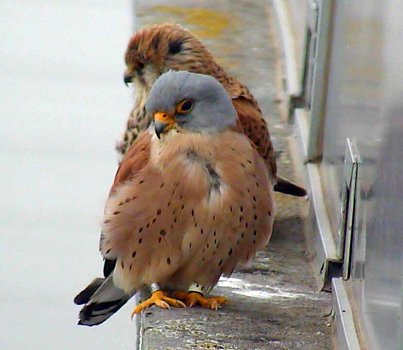Lesser kestrels during reproduction are faced with different optimization dilemmas. Either they commute to hunting areas quickly, using a flapping flight, or use a thermal updrafts to ride using a soaring-gliding strategy. Soaring-gliding is cheap but slow and is not always available. Once at the hunting ground there is a new dilemma, either to perch on a tree and wait (slow and inefficient) or use hovering flights (efficient but expensive). In this paper, using high-frequency micro-GPS dataloggers with accelerometers authors show how kestrels solve theses dilemmas and how weather influences the decisions. The paper concludes that lesser kestrels are more energy than time limited. When thermal updrafts are not available they commute to hunting areas close to the colony using flapping flights, but as soon as solar radiation allows it they switch to hunting grounds far from the colony using soaring-gliding commuting flights. In relation to hunting strategy, if it is windy they use hovering because wind reduces its cost; if air temperature is low they prefer perch hunting (probably because preferred prey, large grasshoppers, are inactive). At the end, weather conditions determine the optimal selection of commuting and hunting strategy for each hunting trip along the daily cycle with the curious result that the unit cost of each hunting trip remains constant along the day. informacion[at]ebd.csic.es: Hernandez-Pliego et al (2017) Combined use of tri-axial accelerometers and GPS reveals the flexible foraging strategy of a bird in relation to weather conditions. PLoS ONE 12(6): e0177892
https://doi.org/10.1371/journal.pone.0177892

 Las altas temperaturas están provocando que las lagunas y las marismas de Doñana pierdan agua rápidamente
Las altas temperaturas están provocando que las lagunas y las marismas de Doñana pierdan agua rápidamente




